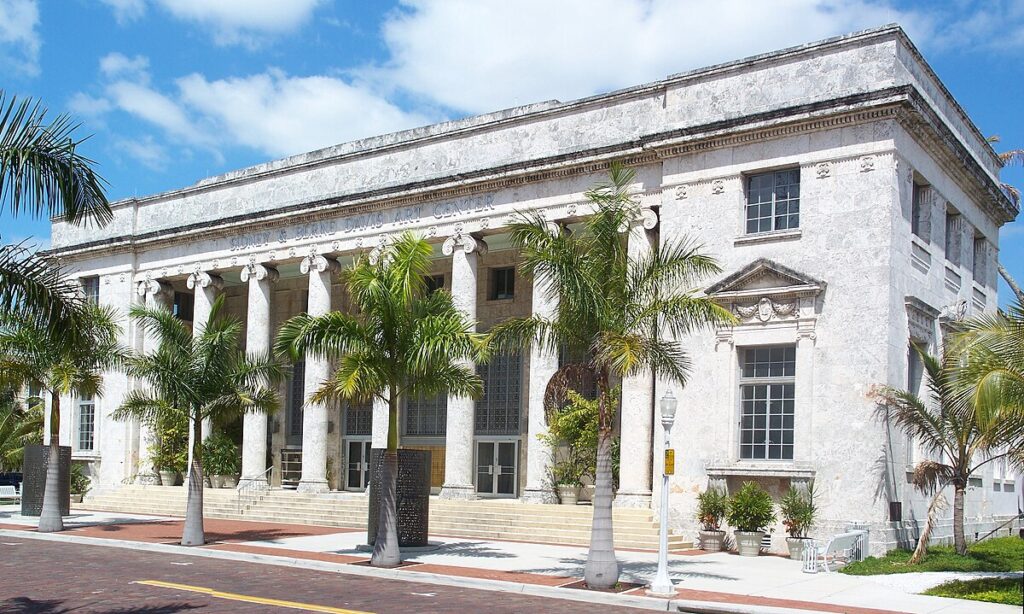
Moving to Fort Myers, Florida: A Comprehensive Relocation Guide
Considering moving to Fort Myers, Florida? This historic Gulf Coast city offers palm-lined streets, river district, and gateway to paradise islands. As Lee County’s seat with approximately 95,000 residents in 2025, Fort Myers combines historic charm with modern growth and access to world-famous beaches.
Demographic Profile to Consider If Moving to Fort Myers:
Fort Myers’ 2025 population is approximately 95,000 residents within city limits, with the metro area exceeding 770,000. The median age is around 42 years, with diverse households including families, professionals, retirees, and seasonal residents. The population is approximately 57% White, 25% Black or African American, and 18% Hispanic. Fort Myers features historic downtown along the Caloosahatchee River, restored districts including the Edison and Ford Winter Estates area, and developing urban neighborhoods. The city serves as the hub of Southwest Florida, with McGregor Boulevard’s royal palm-lined streets creating iconic imagery. Fort Myers balances historic preservation with modern development as the region’s commercial and cultural center. Find trusted local services for moving, living, and working in Fort Myers.Fort Myers Relocation Directory
Cost of Living to Consider If Moving to Fort Myers:
Fort Myers offers moderate to upper-moderate costs for Southwest Florida. Median home values range from $350,000 to $450,000 in 2025, with riverfront and historic district properties commanding higher prices. The median household income is approximately $60,000. Rental properties average $1,700 to $2,300 monthly. Florida’s absence of state income tax benefits residents. Overall cost of living is competitive for Gulf Coast Florida, with Fort Myers providing value compared to beachfront communities while offering quick access to Sanibel, Fort Myers Beach, and Captiva. Housing costs vary by neighborhood from historic districts to newer suburban developments. The city’s role as regional hub influences commercial real estate and business costs.
Economy and Job Market:
Fort Myers’ economy centers on healthcare, tourism, retail, professional services, and government. Lee Health hospital system is the region’s largest employer. Lee County government and school district provide significant public employment. Edison Mall and other retail centers create service jobs. The historic downtown River District attracts tourism supporting restaurants and shops. Southwest Florida International Airport generates aviation and logistics employment. Real estate and construction sectors remain active with regional growth. Professional services including law, accounting, and consulting thrive as the county seat. Many residents work in healthcare, education, retail, and hospitality. The broader Cape Coral-Fort Myers metro offers diverse opportunities. Tourism peaks in winter months with snowbird influx.
Education:
Lee County School District serves Fort Myers students with numerous schools including Fort Myers High School, Riverdale High School, and various elementary and middle schools. The large district operates throughout Lee County with magnet programs and choice schools. Florida SouthWestern State College provides associate degrees and bachelor’s programs. Florida Gulf Coast University in nearby Fort Myers offers comprehensive four-year programs and has grown into a significant regional university. The educational infrastructure serves the growing population, with continued school construction matching development.
Recreation and Lifestyle:
Fort Myers’ defining attractions are the Edison and Ford Winter Estates, preserving Thomas Edison’s and Henry Ford’s winter homes with botanical gardens and museums. The downtown River District offers restaurants, art galleries, theaters, and nightlife along the Caloosahatchee River. Fort Myers Beach, Sanibel Island, and Captiva Island are 20-30 minutes away offering world-class shelling beaches and Gulf waters. The city hosts spring training for the Minnesota Twins and Boston Red Sox at Hammond Stadium and JetBlue Park. Lakes Regional Park provides recreation facilities, nature trails, and freshwater fishing. The Barbara B. Mann Performing Arts Hall presents theater and concerts. McGregor Boulevard’s royal palm trees create a scenic corridor. Residents enjoy boating on the river, downtown events, and easy beach access. The subtropical climate enables year-round outdoor activities.
Healthcare and Services:
Fort Myers residents access comprehensive healthcare through Lee Health, operating Lee Memorial Hospital, Gulf Coast Medical Center, and multiple facilities throughout the region. Additional providers include Shell Point retirement community’s health services and numerous specialty practices. The region’s healthcare infrastructure is excellent, with major hospitals and specialized care throughout Lee County. Fort Myers serves as the healthcare hub for Southwest Florida.
Transportation:
Fort Myers benefits from Interstate 75 running through the eastern edge, U.S. Highway 41 (Cleveland Avenue) as the main north-south corridor, and Colonial Boulevard and Dr. Martin Luther King Jr. Boulevard as primary east-west routes. Southwest Florida International Airport serves the region with expanding service. LeeTran operates bus routes throughout Fort Myers and Lee County. Most residents rely on personal vehicles, with typical commute times around 25-35 minutes. Traffic congestion occurs during peak tourist season.
Conclusion:
Moving to Fort Myers in 2025 offers historic charm with royal palm-lined streets, access to paradise islands, and role as Southwest Florida’s cultural and commercial hub. The city’s combination of Edison-Ford heritage, river district energy, and gateway to world-famous beaches makes it attractive for diverse residents seeking Gulf Coast lifestyle with urban amenities.

